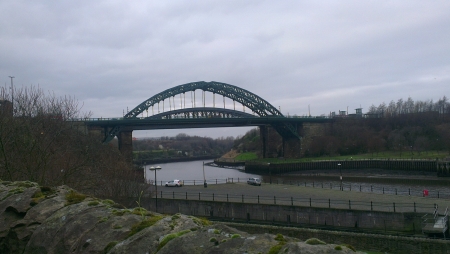
The Wearmouth Bridge is a through arch bridge that crosses the River Wear in Sunderland and is the last bridge before the River Wear’s mouth opens up into the North Sea.
The first bridge opened on this site in 1796 and since then has been reconstructed twice.
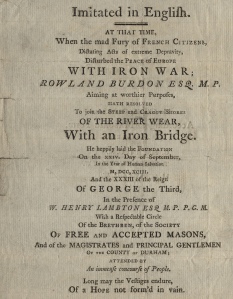
The first bridge 1796 – 1929.
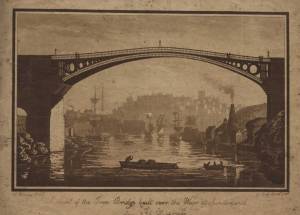
The first Wearmouth Bridge was opened in 1796. The foundation stone was laid in September 1793. This was sponsored by the MP Rowland Burdon. The bridge was designed by Thomas Paine following a similar build in Philadelphia, Pennsylvania USA.
A Plaque on the side of the current bridge says its construction has “proved to be a catalyst for the growth of Sunderland” since it was opened.
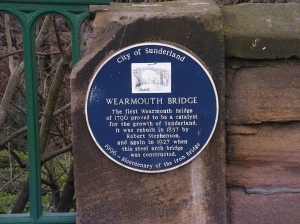
To gain access between Monkwearmouth and Bishopwearmouth previous to the bridge being built meant you had to get a ferry from one side to the other. As the nearest bridge was at Chester-le-Street. The bridge did initially have a toll for pedestrians but this was abolished in 1846.
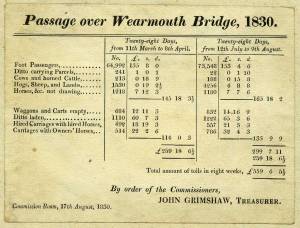
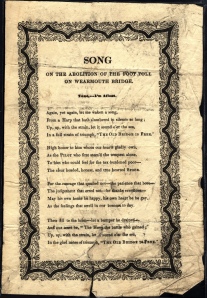
The Wearmouth Bridge was the second iron made bridge built after the Ironbridge that crosses the River Severn in Shropshire. The bridge was over twice as long as the Ironbridge with a nominal span of 240 feet, and only three-quarters the weight. At the time of the bridge being built it was the biggest single span bridge in the world at 72 m. The bridge was opened to traffic on 9 August, 1796 having cost a total of £28,000 to build.
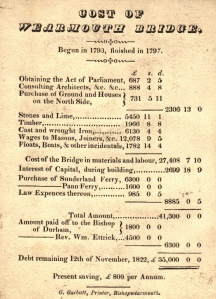
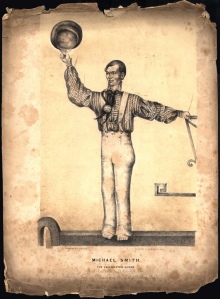
In 1842 Micheal Smith, a American living in Sunderland, jumped off the Wearmouth Bridge for money, he amazingly survived and swam to the riverbank. The crowds who watched started giving him money as a reward and as a result of this the Police arrested him for begging.
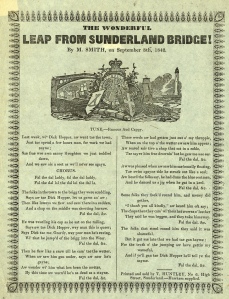
1805 repair and 1857 reconstruction.
In 1805 the bridge had to be repaired due to heat from the sun causing some of the cross tubes to fall out.
In 1857 up until 1859 the bridge was reconstructed by Robert Stephenson son of George Stephenson the famous locomotive builder and railway engineer.
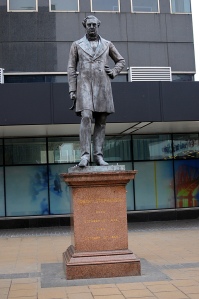
The bridge was stripped back to its six iron ribs and levelled the hump in the middle by raising the abutments. The bridge was then opened again in March 1859. The toll was then completely abolished in 1885.
The current bridge 1929 – current.
With larger volumes of traffic using the bridge construction began in 1927 to widen it. It was designed by Mott, Hay and Anderson and fabricated by the famous bridge building firm Sir William Arrol & Co in Glasgow ; who also built the Tower Bridge in London as well as the Forth Rail Bridge. The new bridge was built around the old one allowing the bridge to stay open. It was then re-opened on 31 October 1929 by the Duke of York (who would later become King George VI).
The cost of the current bridge amounted to £231,943 of which £12,000 was spent on dismantling the old bridge. This meant the building of the new Wearmouth Bridge cost £203,948 more than it did initially in 1796.
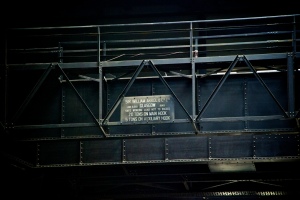
The adjoining railway bridge was built in 1879 on the west side of the bridge and extended the railway south from Monkwearmouth to the centre of Sunderland.
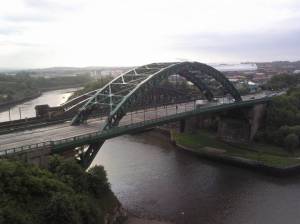
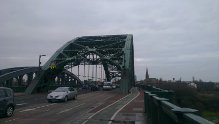

Loved this post my great Granda worked on the bridge when it was rebuilt the second time. The photos are really good too giving different aspects of the bridges history.
LikeLike
Glad you liked the post and that is really interesting about your granda. Yes there were so many images relating to the bridge it was hard to pick which ones to use.
LikeLike
This is another great post mate.
LikeLike